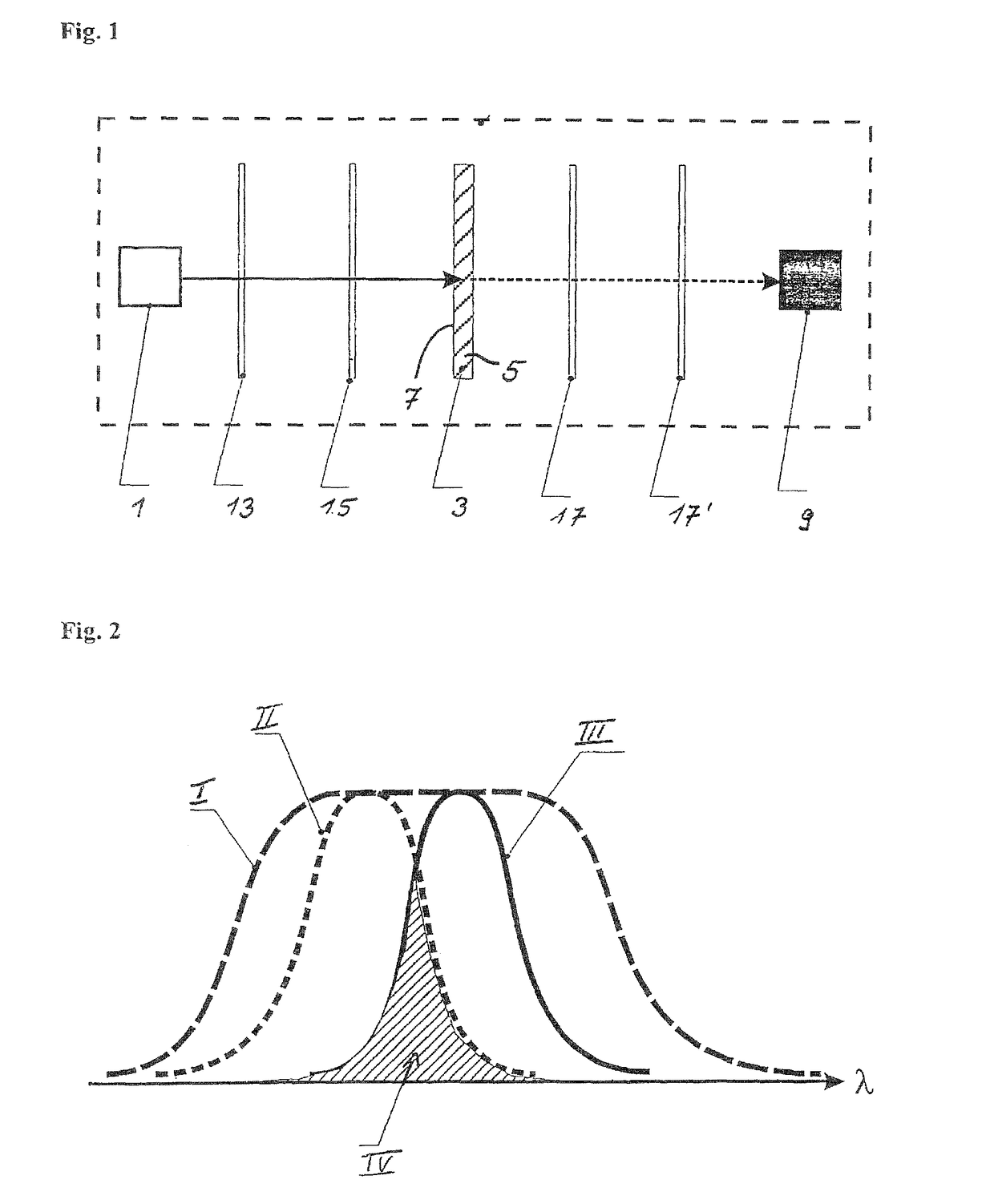Method and device for determining reflection coefficients on filter arrangements having thin layers
a filter arrangement and reflection coefficient technology, applied in the direction of immunoassays, component separation, material testing goods, etc., can solve the problems of insufficient sensitivity and reliability of these measurement processes, inability to achieve uniform intensity distribution, and disadvantageous dependence of all conventional methods on intensity, so as to achieve significant reduction of data amount and improve signal quality
- Summary
- Abstract
- Description
- Claims
- Application Information
AI Technical Summary
Benefits of technology
Problems solved by technology
Method used
Image
Examples
Embodiment Construction
[0077]The reference symbol 1 in FIG. 1 refers to a light source in form of a high-intensity light emitting diode (LED) capable of emitting light in a narrow wavelength range. The light is transmitted directly to the sample, indicated with the overall reference symbol 3, to be tested without using a coupling element, and also without using a collimator for producing a parallel light beam.
[0078]The sample 3 includes an at least partially transparent carrier 5 which in this exemplary embodiment is made of glass in form of an object glass slide and on which a thin layer 7 is applied. For application of this thin layer 13, the designated surface of the carrier 5 is first activated by producing OH-groups on the glass surface.
[0079]The glass surface is now prepared for a surface treatment in form of silanization with epoxy groups, which is in this case performed with an epoxy silane in form of 3-(glycidyl oxypropyl) trimethoxy silane (GOPTS), wherein this is only one of many possible compo...
PUM
 Login to View More
Login to View More Abstract
Description
Claims
Application Information
 Login to View More
Login to View More - R&D
- Intellectual Property
- Life Sciences
- Materials
- Tech Scout
- Unparalleled Data Quality
- Higher Quality Content
- 60% Fewer Hallucinations
Browse by: Latest US Patents, China's latest patents, Technical Efficacy Thesaurus, Application Domain, Technology Topic, Popular Technical Reports.
© 2025 PatSnap. All rights reserved.Legal|Privacy policy|Modern Slavery Act Transparency Statement|Sitemap|About US| Contact US: help@patsnap.com



